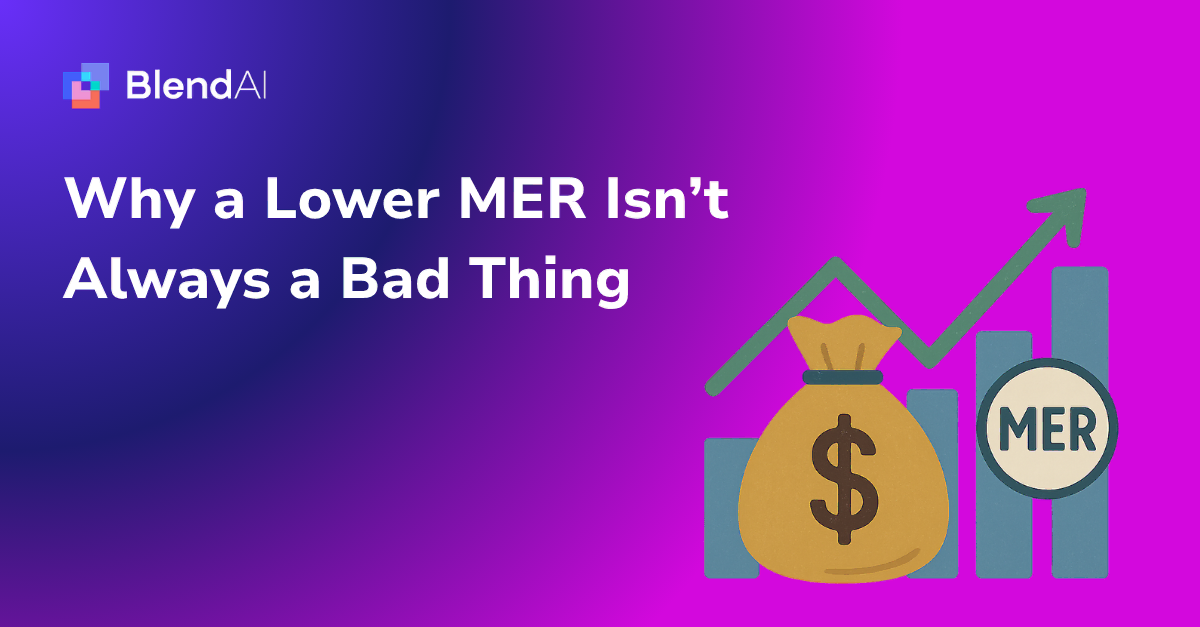GROWTH HACKING FOR ECOMMERCE
Our Blog

・
Promotions
eCommerce
02 Dec 2025
・
5 min
Black Friday Playbook: Scale Strategically with Blend
Make this Black Friday your most profitable yet with Blend AI’s ultimate playbook. Learn how to scale confidently by knowing your key numbers, crafting irresistible offers, planning a clear sales calendar, and monitoring performance daily. Blend’s Creative Analysis tools help you identify winning ads fast and double down on what works so you can scale smarter, not riskier.

・
eCommerce
06 Nov 2025
02 Dec 2025
・
5 min
Agentic Commerce: AEO for Ecommerce Brands
Online shopping in 2025 is shifting from keyword searches to conversational queries driven by AI shopping assistants like ChatGPT, Gemini, and Perplexity. This evolution called agentic commerce means AI tools now act as personal shoppers, curating and recommending products directly in chat. For ecommerce brands, visibility depends not on SEO rankings, but on how well AI systems can understand, trust, and interpret their product data. Enter AEO (Answer Engine Optimization), the next phase of SEO built for AI. Instead of optimizing for algorithms, AEO focuses on clarity, structure, and trust ensuring your product data, schema markup, and content are machine-readable and semantically clear so AI agents can feature your brand as the best answer. Brands must prioritize structured data, accurate feeds, visible reviews, and conversational content that mirrors real shopper questions. Those who adapt early will dominate AI-driven discovery as agentic commerce becomes the norm. Tools like Blend AI help automate this transition, enriching and syncing product data across platforms like Google Shopping AI and ChatGPT so brands stay discoverable and trusted in the age of AI-powered shopping.
.png)
・
eCommerce
20 Jun 2025
02 Dec 2025
・
5 min
Make the Most of July: Tax Back Sale
July’s tax refund season in Australia is a prime time for eCommerce brands to drive sales through self-gift and lifestyle offers. Launch timely campaigns with fresh creatives across ads, email, and PR to capture demand. Beauty, fashion, and tech brands can benefit most from this high-intent, low-competition window.
.png)
・
Google Ads
12 Jun 2025
02 Dec 2025
・
6 min
Optimising Google Ads for a Sale Period
EOFY is a high-intent, high-competition moment. If your Google Ads don’t visually signal a sale, you’re losing clicks. This blog skips bidding tactics and focuses on what actually makes your ads stand out: sale price formatting, badges, promo extensions, and landing page alignment. Get the essentials on how to make your Shopping and Search ads look like they mean business this sale season.

・
eCommerce
27 May 2025
02 Dec 2025
・
4 min
Why a Lower MER Isn’t Always a Bad Thing
Worried your MER is dropping as you scale? Don’t be. A lower Marketing Efficiency Ratio can actually mean higher profit. While a high MER might signal efficiency, it often comes with small-scale limitations. As you increase ad spend and reach, your MER may decrease - but your margins and total profit can grow. Focus on sustainable growth, not just surface-level metrics.
Ready for AI to fuel your growth?
Blend runs your ads, optimizes your budgets, and shows you exactly what’s working - so you can grow faster without wasting spend.
